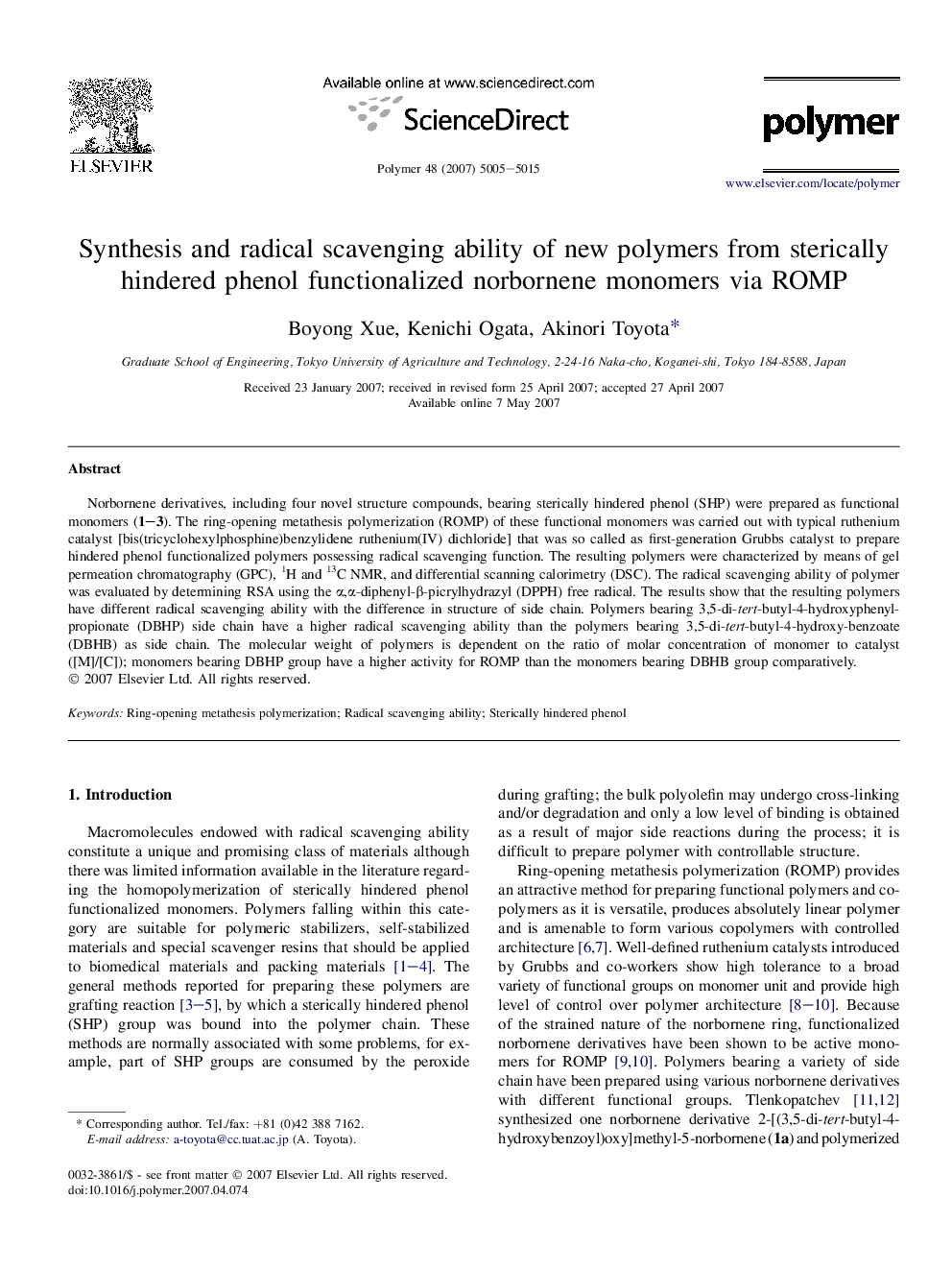| Article ID | Journal | Published Year | Pages | File Type |
|---|---|---|---|---|
| 5185625 | Polymer | 2007 | 11 Pages |
Abstract
Norbornene derivatives, including four novel structure compounds, bearing sterically hindered phenol (SHP) were prepared as functional monomers (1-3). The ring-opening metathesis polymerization (ROMP) of these functional monomers was carried out with typical ruthenium catalyst [bis(tricyclohexylphosphine)benzylidene ruthenium(IV) dichloride] that was so called as first-generation Grubbs catalyst to prepare hindered phenol functionalized polymers possessing radical scavenging function. The resulting polymers were characterized by means of gel permeation chromatography (GPC), 1H and 13C NMR, and differential scanning calorimetry (DSC). The radical scavenging ability of polymer was evaluated by determining RSA using the α,α-diphenyl-β-picrylhydrazyl (DPPH) free radical. The results show that the resulting polymers have different radical scavenging ability with the difference in structure of side chain. Polymers bearing 3,5-di-tert-butyl-4-hydroxyphenyl-propionate (DBHP) side chain have a higher radical scavenging ability than the polymers bearing 3,5-di-tert-butyl-4-hydroxy-benzoate (DBHB) as side chain. The molecular weight of polymers is dependent on the ratio of molar concentration of monomer to catalyst ([M]/[C]); monomers bearing DBHP group have a higher activity for ROMP than the monomers bearing DBHB group comparatively.
Related Topics
Physical Sciences and Engineering
Chemistry
Organic Chemistry
Authors
Boyong Xue, Kenichi Ogata, Akinori Toyota,
